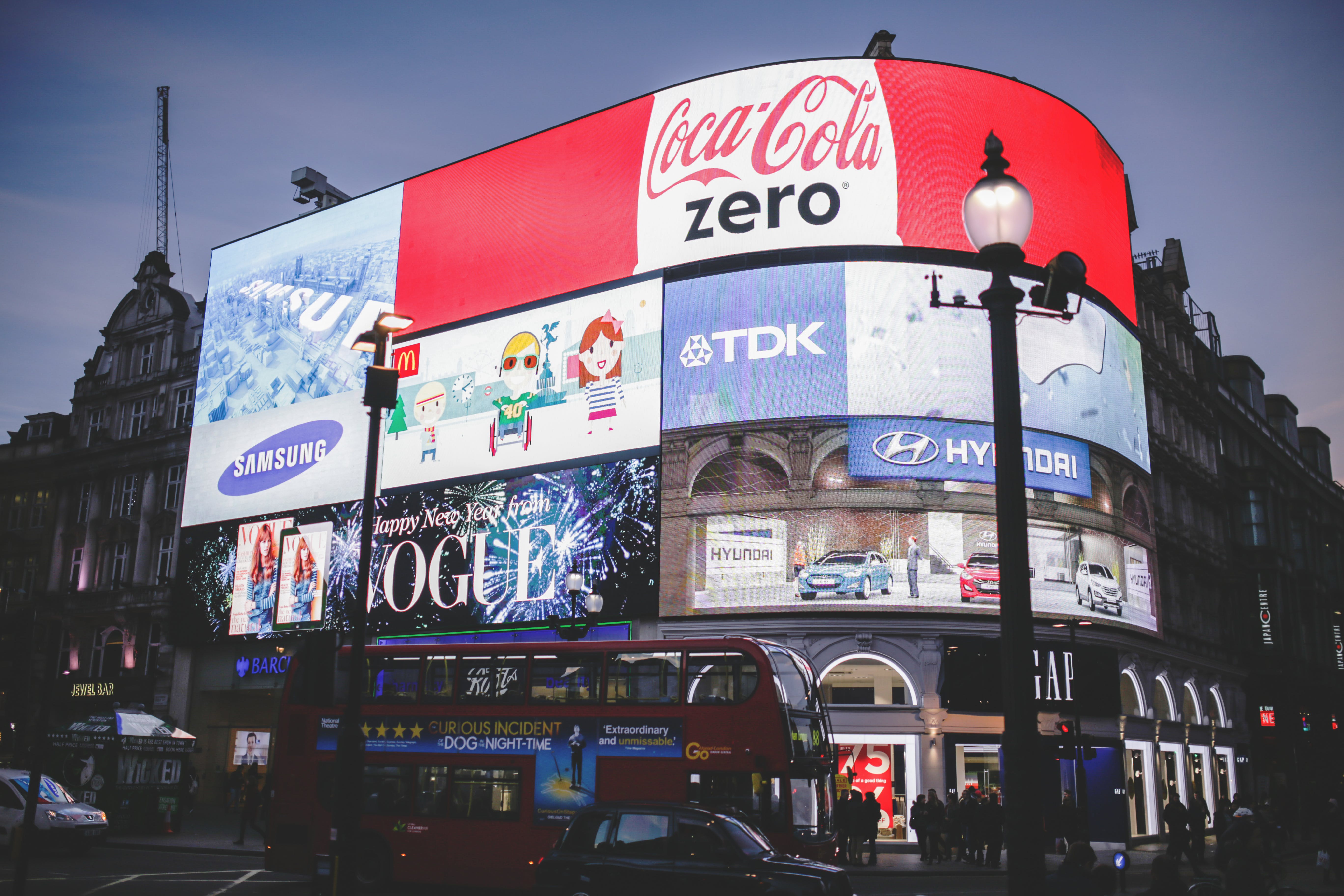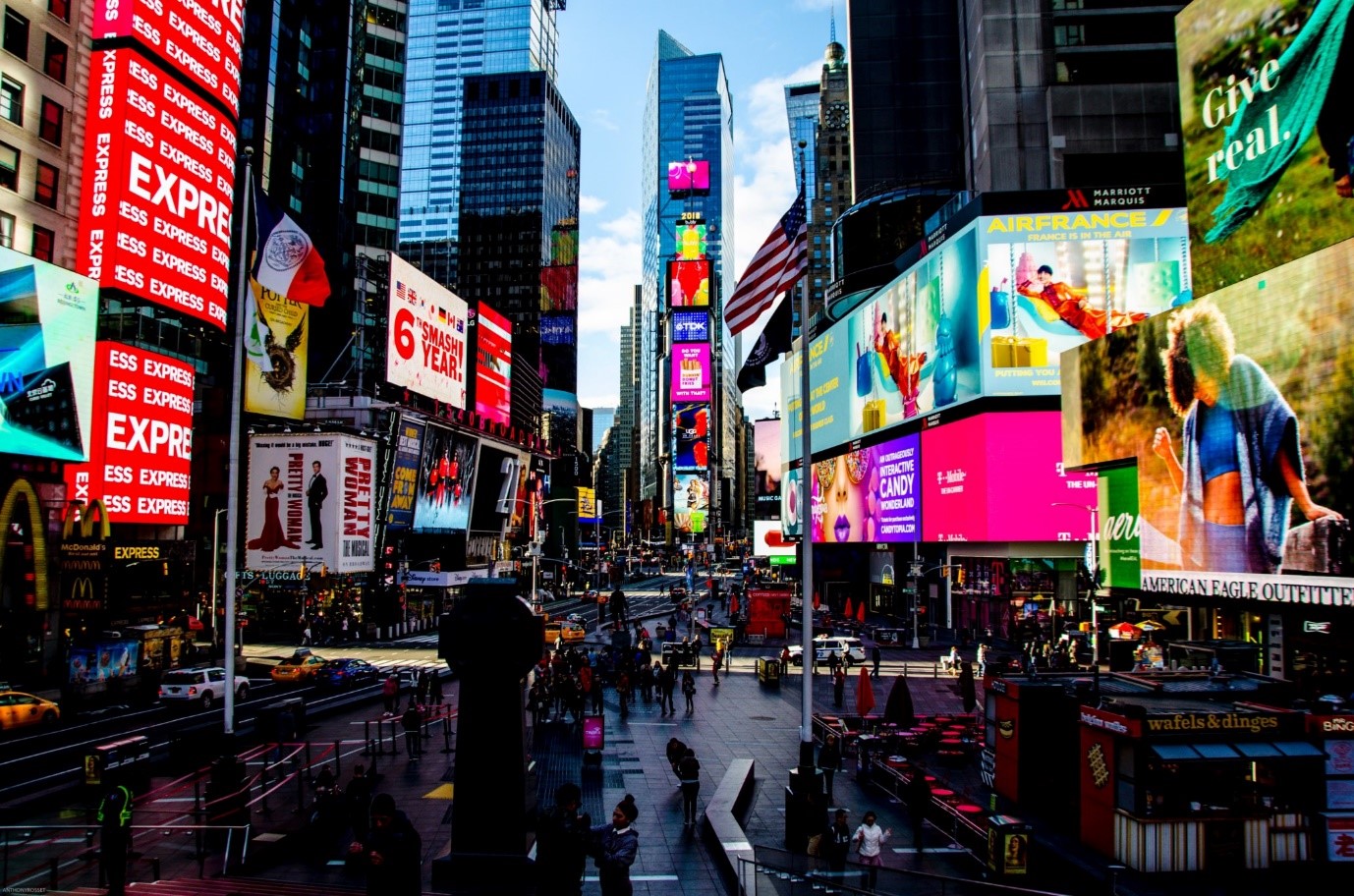
What is digital signage? : A Comprehensive Guide
Visibility is the key to grabbing the attention of the audience. According to global digital signage market statistics, Digital signage has raised sales by 7% and profits by 124%.
Digital signage refers to the use of LED displays and digital screens to communicate information, advertisements, or messages, creating customized consumer experiences. It involves generating, managing, and displaying information using hardware and software integration.
Businesses may use LED displays and digital screens to communicate information, ads, or messages to create customized consumer experiences via digital signage. Businesses can generate, manage, and show information using hardware and software integration. Businesses may interact with their consumers effectively and powerfully by using digital signage. In this article, you learn more about digital signage and how it enhances your business presence.
Evolution of Traditional Signage to Digital Signage.
Back then, signages were used to tell fascinating stories. Moreover, the signage sector has experienced significant changes from medieval signboards to commonplace road signs. With the integration of cutting-edge technologies like Augmented Reality, Virtual Reality, and the Internet of Things, smart signage emerges as a game-changer in the modern day.
The transition from traditional to digital signage represents a shared need for flexibility and adaptation as we embrace the digital world. Digital signage has transformed audience communication by providing immersive and engaging experiences beyond static displays. Advancements in technology allow for quick and remote information updates, in contrast to traditional signs’ time-consuming procedures.
Digital signage presents countless opportunities for memorable brand encounters and offers companies immersive experiences in the digital era.
Significance of digital signage in modern times.
In the era of technological advancement, digital signage takes the spotlight, seamlessly weaving into diverse sectors and reshaping communication, engagement, and brand visibility.
1. Dynamic Communication Channels.
Businesses can effectively and creatively communicate real-time information through digital signage, which offers dynamic content. This flexibility provides a platform for expressive communication, going beyond static approaches.
2. Grabbing Attention in a Visual Symphony.
Digital signage surpasses traditional methods with captivating and interactive displays akin to art canvases. This visual symphony draws in viewers and caters to the visually-driven tastes of modern audiences, encouraging greater interaction.
3. Increasing Brand Visibility.
Digital signage utilizes dynamic content, unique branding, and promotions to increase brand visibility in a congested marketplace. The immersive experiences created play a significant role in making a lasting impression.
4. Power of Informed Workplaces.
By simplifying communication channels, digital signage promotes connected and knowledgeable workplaces in office environments. It fosters a cooperative and enthusiastic work atmosphere by ensuring staff members are informed about developments and have simple access to pertinent data.
5. Retail Reinvention.
By influencing consumer behavior, directing purchase decisions, and increasing sales, digital signage changes retail environments. Digital displays deliver an immersive experience beyond traditional advertising, transforming shop surroundings into dynamic, interactive locations.
Components of Digital Signage.
Digital Signage goes beyond just displaying content or ads. It needs full-fledged monitoring and various components that work together to create an effective display system. Let’s Decode Digital Signage Components:
1. Display Screens.
These visual output devices, such as LED or LCD screens, are used to showcase content.
2. Media Players.
Devices responsible for playing and transmitting content to the display screens.
3. Content Management System (CMS).
Software that controls and schedules the content displayed on screens.
4. Connectivity Solutions.
Infrastructure enabling communication between media players and content sources, often involving networks or cloud-based solutions.
5. Content Creation Tools.
Software for designing and developing visually appealing content.
6. Power and Connectivity Cables.
Essential for linking various components and ensuring continuous operation.
7. Mounting and Installation Hardware.
Equipment for securely installing display screens in designated locations.
8. Remote Monitoring and Management Tools.
Systems that allow remote control, monitoring, and troubleshooting of digital signage components.
Applications of Digital Signage.
Beyond gaudy displays, digital signage is a multipurpose technology transforming interaction, communication, and information sharing across various industries.
In government offices, it manages access, distributes vital information, guarantees regulatory compliance, allocates and displays room usage digitally, guides the public through intricate buildings, expedites visitor flow with effective queuing systems, and instantly communicates emergency alerts.
Digital signage helps schools by making it easier for students to navigate large campuses.
Digital signage in business uses client demographics, time, and location to focus advertisements and customize messaging for maximum impact. With many pieces of material displayed simultaneously, video walls create a visual symphony. Content management systems make real-time content deployment on one or more displays possible.
Signage players are digital display content providers, serving as content conductors. The showcase is fastened to surfaces, ceilings, and walls with mounting hardware.
Digital signage has the power to revolutionize a wide range of applications.

Benefits OF Digital Signages.
1. Enhanced Customer Experience.
Increase consumer interaction by providing personalized, interactive content that appeals to the target demographic.
2. Broader Scope.
With the capacity to deliver real-time information and keep everyone informed, you can reach a wider audience.
3. Customizing the Message Targeted message.
Adapt the message to audiences easily, ensuring it has an effect and is relevant.
4. A Financial Advantage Low Development.
Developing and launching new advertisements costs less than printing signs.
5. Enhanced Sales.
Presenting with Carefully Crafted Presentations: Increase revenue by showcasing goods and services in an eye-catching and up-to-date way that is relevant to the market.
6. Interpersonal Communication.
Boost internal communication by posting updates, announcements, and lists of staff accomplishments.
7. Instantaneous Updates.
Provide prompt and effective communication of critical announcements and instructions to staff members by keeping them updated in real-time.
8. Product Details.
Display comprehensive product information for informed decision-making.
9. Promotions and Discounts.
Highlight promotions and discounts to drive customer engagement.
10. Live Video Streaming.
Enhance the visual appeal by integrating live video content.
Future Trends and Tips for Digital Signage Success.
Staying ahead of the curve in the dynamic world of digital signage is essential for companies looking to make a lasting impression. Future trends suggest that interactive displays like holograms, 3D billboards, and augmented reality will combine interactive information with touchscreens and motion sensors to create compelling experiences.
Additionally, The Metaverse is a new technology that has the potential to revolutionize digital signage. With the Metaverse, marketers can reach users in a whole new way. They can create immersive brand experiences, personalized ads, and interactive stories that engage audiences more effectively. The Metaverse also offers a greener and more accessible future for digital signage.
Furthermore, Prioritising high-contrast images, welcoming innovation for novelty, and bolstering cybersecurity to safeguard digital networks are all crucial pieces of advice. By adopting these trends and advice, digital signage may continue to be a powerful instrument for memorable and effective communication in the changing corporate environment. As we navigate, stay tuned for additional insights.
Elevating Digital Signage with Zoapi: A Comprehensive Solution.
Zoapi is a key player in the digital signage arena, providing features that streamline configuration, improve room management, and offer valuable insights.
We are the centralized hub that simplifies configuring digital signage features, integrating room calendars for optimized scheduling, managing the Room Scheduler application, and providing detailed stats and analytics for informed decision-making.
With Zoapi’s real-time device management, it’s easy to check device status, make settings changes, configure Zoapi Hubs for digital signage, integrate calendar services seamlessly, and evaluate meeting room efficiency through detailed stats and analytics.
Conclusion.
In conclusion, digital signage is revolutionizing modern communication. Companies like Zoapi are prime examples of this. Its adoption is becoming more and more necessary as a result of technology’s critical influence on the creation of effective communication. For companies looking for complete solutions, real-time analytics, and seamless integration, a partner for digital signage like Zoapi becomes essential.
Read More.
Staying In the Loop of 21st-Century Technology with Zoapi
4 Technology Trends That Are Shaping The Future Of Workplace
4 Effective Ways To Improve Team Collaboration In Your Business


